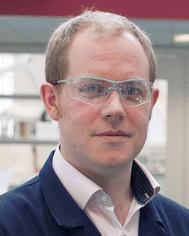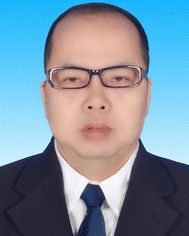Functional framework materials for biomedical applications
Ross S.
Forgan
 *a,
Ruxandra
Gref
*a,
Ruxandra
Gref
 *b and
Jianqiang
Liu
*b and
Jianqiang
Liu
 *c
*c
aSchool of Chemistry, University of Glasgow, Joseph Black Building, University Avenue, Glasgow G12 8QQ, UK. E-mail: ross.forgan@glasgow.ac.uk
bInstitut des Sciences Moléculaires d'Orsay, UMR 8216 CNRS, Paris Saclay University, France. E-mail: ruxandra.gref@universite-paris-saclay.fr
cGuangdong Medical University, Dongguan, Guangdong 523000, China. E-mail: jianqiangliu8@gdmu.edu.cn
The COVID-19 pandemic and subsequent global roll-out of vaccines based on the delivery of mRNA sequences formulated in lipid nanoparticles highlighted the vast potential of nanomedicine in tackling a range of diseases and medical conditions.1 Lipid nanoparticles are just one class of potential delivery vector, and so there are major ongoing research efforts investigating alternative materials to act as nanocarriers for a variety of active cargos, from small molecules to therapeutic proteins. In this regard, framework materials, such as metal–organic frameworks (MOFs), covalent organic frameworks (COFs), and hydrogen-bonded organic frameworks (HOFs), combine chemical and structural versatility to allow construction of highly functional porous materials. Consequently, research into their biomedical application can be considered as still in an initial exponential growth phase.2
A wide range of framework materials, which show diversity in their dimensionality, chemical composition, crystallinity, and linkages (covalent, coordinative, and noncovalent), are available to researchers. Within the different sub-classes of framework materials, the ability to carefully select components with biocompatibility and functionality in mind means that materials can be tailored to a specific application, and they often exhibit multiplex functionality. For example, framework materials can act not only as drug carriers, but also have functionality embedded into their structures to allow concomitant imaging or novel therapeutic modalities, such as photodynamic and chemodynamic therapy. Their ability to go beyond being simple delivery vectors underpins much of the research into their bioapplications, and it is therefore not surprising that the first framework material to enter human trials is a Hf MOF for combined radiotherapy-radiodynamic therapy (Phase I: NCT03444714; Phase II: NCT05838729), while a second is being assessed for synergic radiotherapy and immunotherapy (Phase I: NCT06182579). We have, therefore, curated this themed collection to highlight the diversity of structure, function, and application of framework materials in the hope of inspiring further ingenuity in their biomedical application.
The depth of the field is evident in the range of different framework materials discussed in this themed collection. Abánades Lázaro and Giménez-Marqués detail the synthesis of nanoscale MUV-2, a three-dimensional mesoporous Fe-MOF, which can load significant quantities of the anticancer chemotherapeutic paclitaxel and enhance the selectivity of its in vitro cytotoxicity (https://doi.org/10.1039/D3TB01819A). Liu and Wei detail two-dimensional Zn-MOF nanosheets containing ruthenium complexes, which can be hybridised with oligonucleotides to generate an electrochemical gene sensor (https://doi.org/10.1039/D3TB01934A). Furukawa et al. describe dirhodium metal–organic polyhedra (MOPs) – discrete porous cage analogues of MOFs – which can be connected into amorphous coordination polymers that release NO from the porous cage of the MOP in response to light or water (https://doi.org/10.1039/D3TB02162A). Moving to organic systems, Zhao and Yan report an imine-linked COF containing porphyrin and anthracene moieties, which is capable of photogenerating (porphyrin) and storing (anthracene) 1O2, and thus photosterilising wounds (https://doi.org/10.1039/D3TB02017G). Zhang, Kim and Song show that Ag2O nanoparticles can be embedded within a microporous organic polymer to make processable coatings with excellent antibacterial properties (https://doi.org/10.1039/D3TB02619A). Finally, Yi and Wang describe encapsulation of charge-transfer co-crystals within the pores of a crystalline HOF, which exhibit significant absorption in the near infrared and so can be used for near-IR-II photothermal therapy against cancer both in vitro and in vivo (https://doi.org/10.1039/D3TB01475D). These examples underscore the wide functional toolkit available to materials scientists when tackling biological applications.
Perhaps as a consequence, this themed collection also covers a significant breadth of biological applications that go beyond conventional drug delivery. Rojas and Rodríguez-Diéguez review the latest advances in using MOFs and discrete metal complexes to both diagnose and treat Alzheimer's disease, representing a new frontier for MOF-based drug delivery and theranostics (https://doi.org/10.1039/D3TB00427A). Li and Guo comprehensively review the application of magnetic two-dimensional nanocomposites against cancer, further expanding on the wide range of framework materials explored in this collection while also introducing exciting emerging technologies, including magnetic hyperthermia therapy, photothermal therapy, and photodynamic therapy (https://doi.org/10.1039/D3TB02333H). Wang reviews the use of MOFs and related hybrid materials as implantable devices, which may have applications in orthopaedics, cardiovascular disease, neural-tissue engineering, and general biochemical sensing in situ (https://doi.org/10.1039/D3TB02620E). Sensing is also the focus of a review by Kumar, Liu, Pan and Ouyang, who provide a comprehensive overview of the use of luminescent MOFs as probes for important biochemical analytes (https://doi.org/10.1039/D3TB00505D). Research articles also cover emerging applications. Yu describes the loading of Ga-MOFs with antimicrobial peptides to produce dual-mode antibacterial agents (https://doi.org/10.1039/D3TB01754K), complementing work by Mobin who loads Cu MOFs with isoniazid to inhibit biofilm formation (https://doi.org/10.1039/D3TB02292G). Lastly, Hao and Zhou show that dexamethasone-loaded ZIF-8 can be hybridised with wood aerogels, leading to bone regeneration at cranial defects in mouse models (https://doi.org/10.1039/D3TB01484C).
We hope that the themed collection provides a representative overview of the state-of-the-art framework materials and biomedical applications currently at the forefront of the field, serving both to highlight the huge potential of framework materials and inspire researchers towards the design of new materials and investigation of new applications.
References
- N. Chaudhary, D. Weissman and K. A. Whitehead, Nat. Rev. Drug Discovery, 2021, 20, 817–838 CrossRef CAS.
- A. Wang, M. Walden, R. Ettlinger, F. Kiessling, J. J. Gassensmith, T. Lammers, S. Wuttke and Q. Peña, Adv. Funct. Mater., 2023, 2308589 CrossRef.
| This journal is © The Royal Society of Chemistry 2024 |



